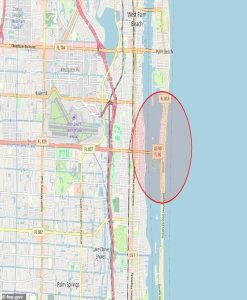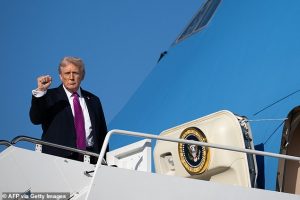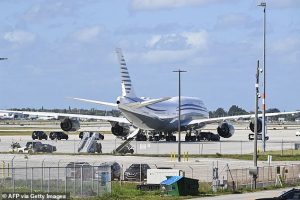Key Takeaways
- FAA imposes 24/7 flight restrictions around Trump’s Mar-a-Lago estate
- Restrictions effective until October 2026, affecting major airlines
- Palm Beach International Airport flights require minor route adjustments
- Security measures include drone jamming and aircraft seizure powers
The Federal Aviation Administration has implemented round-the-clock flight restrictions around President Trump’s Mar-a-Lago estate in Florida, affecting major airlines operating from Palm Beach International Airport. The security measures will remain in force until October 2026, requiring aircraft to maintain a one-nautical-mile distance from the presidential residence.
Airport Impact and Flight Adjustments
Palm Beach International Airport (PBI), serving approximately eight million passengers annually, now operates with a restricted air zone directly east of its facilities. Carriers including American, Delta, United, JetBlue and Southwest must adjust flight paths for routes to destinations like New York, Atlanta, Boston, and Chicago.

Pilot Douglas Matthews noted that while wind calculations were already part of takeoff procedures, the new no-fly zone introduces additional complexity. However, air traffic controllers will guide aircraft around the restricted area, with most flights experiencing only minor course corrections adding seconds to minutes to travel time.
Security Measures and Enforcement
The FAA established the Temporary Flight Restriction citing ‘special security reasons’ following the discovery of a makeshift hunting stand with clear visibility to Air Force One’s parking location. This comes after two alleged assassination attempts targeting President Trump before the 2024 election.

Under the Presidential Threat Protection Act, multiple government agencies including Homeland Security and the Department of Justice can now:
- Jam drone signals and confiscate unauthorized aircraft
- Seize private property in restricted airspace
- Fine violators and arrest pilots
- Force unauthorized aircraft to land
Limited Regional Impact
Despite the restrictions, aviation officials confirm that major Florida airports including Miami and Fort Lauderdale won’t experience significant delays. The small size of the restricted zone means detours will be minimal for most flights operating in the region.

Authorized aircraft requiring access to the restricted zone must obtain special FAA permission, file complete flight plans, and use specific transponder codes. The FAA hasn’t indicated whether the restrictions will be extended beyond the 2026 expiration date.










